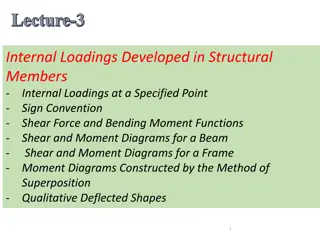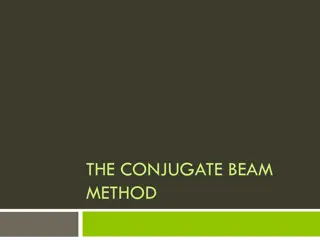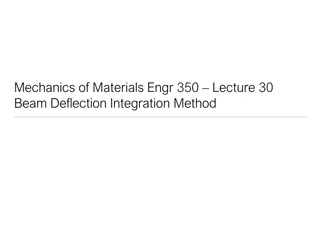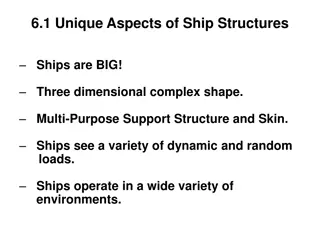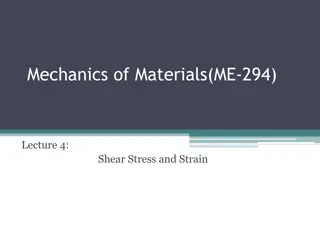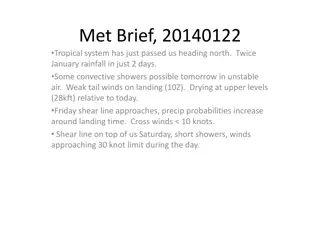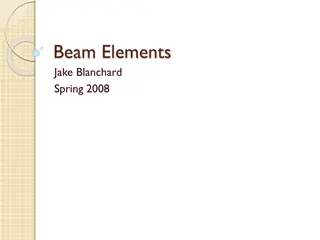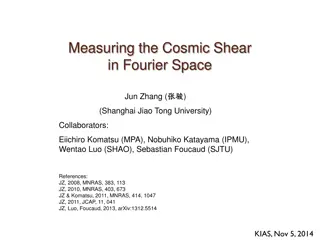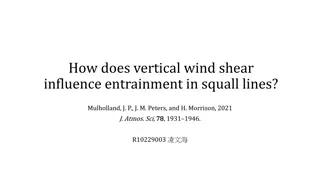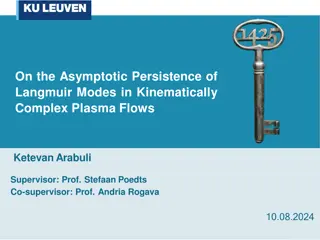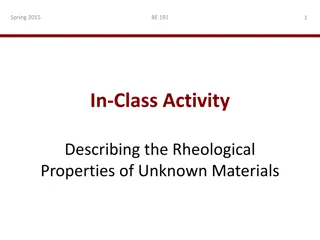Understanding Shear and Moment in Beams
Beams play a crucial role in mechanical engineering, with two main types - statically determinate and indeterminate beams. Explore the definition of beams, loading types, and the concept of shear and moment diagrams to understand the behavior of beams under different loads and reactions. Learn how to differentiate between statically determinate and indeterminate beams and grasp the significance of shear and moment forces in maintaining equilibrium.
Download Presentation

Please find below an Image/Link to download the presentation.
The content on the website is provided AS IS for your information and personal use only. It may not be sold, licensed, or shared on other websites without obtaining consent from the author. Download presentation by click this link. If you encounter any issues during the download, it is possible that the publisher has removed the file from their server.
E N D
Presentation Transcript
Al-Mustansiryah University Mechanical Engineering Department Strength of materials Strength of materials Shear & Moment in Beams Shear & Moment in Beams Part 1 : Tutorial By Dr. Abbas Ahmed Al-Asady
DEFINITION OF A BEAM DEFINITION OF A BEAM : : A beam is a bar subject to forces or couples that lie in a plane containing the longitudinal of the bar. According to determinacy, a beam may be determinate or indeterminate. STATICALLY DETERMINATE STATICALLY DETERMINATE BEAMS BEAMS : : Statically determinate beams are those beams in which the reactions of the supports may be determined by the use of the equations of static equilibrium. The beams shown below are examples of statically determinate beams.
STATICALLY INDETERMINATE STATICALLY INDETERMINATE BEAMS: BEAMS: If the number of reactions exerted upon a beam exceeds the number of equations in static equilibrium, the beam is said to be statically indeterminate. In order to solve the reactions of the beam, the static equations must be supplemented by equations based upon the elastic deformations of the beam. The degree of indeterminacy is taken as the difference between the umber of reactions to the number of equations in static equilibrium that can be applied. In the case of the propped beam shown, there are three reactions R1, R2, and M and only two equations ( M = 0 and sum;Fv = 0) can be applied, thus the beam is indeterminate to the first degree (3 2 = 1).
TYPES OF LOADING TYPES OF LOADING Loads applied to the beam may consist of a concentrated load (load applied at a point), uniform load, uniformly varying load, or an applied couple or moment. These loads are shown in the following figures.
Shear and Moment Diagrams Shear and Moment Diagrams Consider a simple beam shown of length L that carries a uniform load of w (N/m) throughout its length and is held in equilibrium by reactions R1 and R2. Assume that the beam is cut at point C a distance of x from he left support and the portion of the beam to the right of C be removed. The portion removed must then be replaced by vertical shearing force V together with a couple M to hold the left portion of the bar in equilibrium under the action of R1 and wx. The couple M is called the resisting moment or moment and the force V is called the resisting shear or shear. The sign of V and M are taken to be positive if they have the senses indicated above.
Solved Problems in Shear and Moment Solved Problems in Shear and Moment Diagrams Diagrams INSTRUCTION Write shear and moment equations for the beams in the following problems. In each problem, let x be the distance measured from left end of the beam. Also, draw shear and moment diagrams, specifying values at all change of loading positions and at points of zero shear. Neglect the mass of the beam in each problem.



